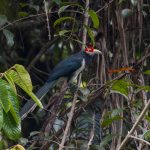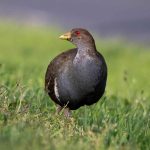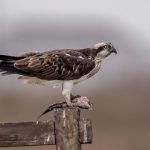As always, the “Just for Fun Avian ID Quiz” is brought to you by Jory Langner, our esteemed Avian Quizmaster, who assures we 10,000 Birds bloggers that he was not out in the sun too much and did not experiment with peyote prior to making this week’s quiz…and I guess we have no choice but to believe him.
It’s Friday. That means it’s time for the answer to last Wednesday’s Just For Fun Avian ID Quiz #6.
First off, in answer to Corey’s introductory comments to the quiz:
YES, there really is an answer to the quiz, as you’ll shortly see.
NO, I didn’t do any peyote while in New Mexico. Unfortunately I didn’t do any serious birding either.
Second, and more importantly: I TOLD YOU THE QUIZ WAS OBSCURE. The clues were obfuscated horribly.
Congratulations to all who attempted this quiz and participated in the ensuing discussion.
Mute Swan: Paul and Grant, this wasn’t intended as the answer. I don’t think that the 4th clue would be correct. Also, according to Grant, Mute Swan was added to the AOU checklist in 1931, although not sure about the ABA list, so probably the 1st clue would also be incorrect.
Long-billed Dowitcher: yes indeed this is the intended answer. Congratulations to David, who got it right! I am impressed. And thanks for the explanation of alternate plumage. You are correct, this did serve as an extra clue.
Let’s go through the questions one by one. If I’ve missed something or gotten something wrong, I’m sure you’ll leave a comment!
1. If you were birding in the 1940’s or before, this species wouldn’t count on your official year list.
Clearly the bird was added to the official ABA list after 1949. Since this quiz includes only regularly occurring ABA birds (Codes 1-3), it’s probably not going to be an exotic vagrant from a faraway land. More likely the result of a split or a self-sustaining population that was recognized by the ABA. The dowitchers were split in the 1950’s (note to myself for future quizzes: go back and review the differences between the AOU and the ABA lists).
2. This is NOT going to help…Shirley! Shirley, Shirley bo Birley Bonana fanna fo Firley Fee fy mo Mirley, Shirley!
Go back to 1965 and remember these very famous words to the song “The Name Game”, by none other than that one hit wonder singer Shirley Ellis. So what? The clue says that this is NOT going to help. Clearly the name of the bird is not going to help. The name of bird contains a field mark that is not going to help ID the bird. In some populations the dowitchers have significant overlap in the length of their bills, so this field mark is not sufficient for identification.
3. Shhhhh.
Why say “Shhhhh”? Because you want to listen. So this species can be identified using voice. The two dowitchers have distinctive calls and may be separated by voice.
4. Young’uns have tertials and scapulars?
What does this clue have to do with anything? For me, not much, because I couldn’t show you a tertial or a scapular without a book even if there was a bird in my hand. But it sure sounds good, doesn’t it?
What I do know, after birding with people who are much more expert than me, people actually use these feathers to identify birds. I am in awe at the knowledge, the experience and the attention to detail that these birders have.
Remember the hint that I gave with the quiz. “I use birding references (books, the internet, etc) to create each quiz.” My understanding is that these details can be useful in identifying shorebirds. In particular, according Advanced Birding by Kenn Kaufman, using these feathers is critical in separating out the young of the two dowitchers (Long-billed vs. Short-billed).
So dowitchers it is then. We’ve narrowed it down. But first let’s review the previous clues to ensure they all still fit.
– The dowitchers were split in the 1950’s. Check.
– The names of the birds, short-billed and long-billed, contain a field mark but are not definitive in identifying these species. Check.
– Voice is useful in sorting out the Long-billed and Short-billed Dowitchers. Check.
– Tertials and scapulars… Check.
So which dowitcher is it?
5. No sub-species.
Of the two dowitchers, only the Long-billed Dowitcher does not have sub-species. Hence the answer to this fully-obfuscated quiz is Long-Billed Dowitcher.
Feel free to throw rotten tomatoes at your computer screen.
And stay tuned for the next quiz.
The main references I’ve used in this quiz are:
[1] Advanced Birding by Kenn Kaufman
[2] The Shorebird Guide by Obrien et al
[3] Pete Dunn’s Essential Field Guide Companion
[4] Also, a good quick overview at this web site.













Leave a Comment